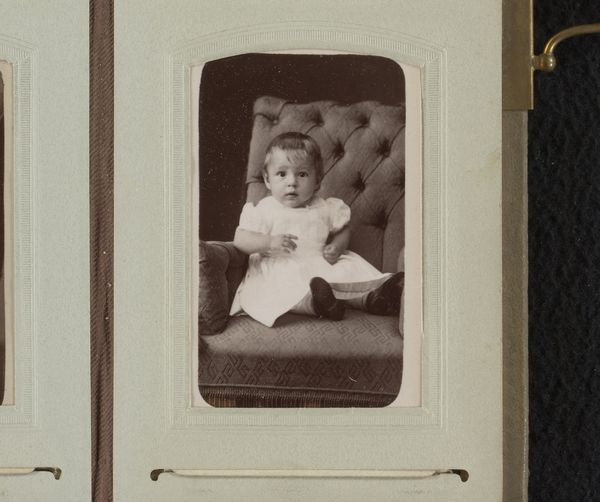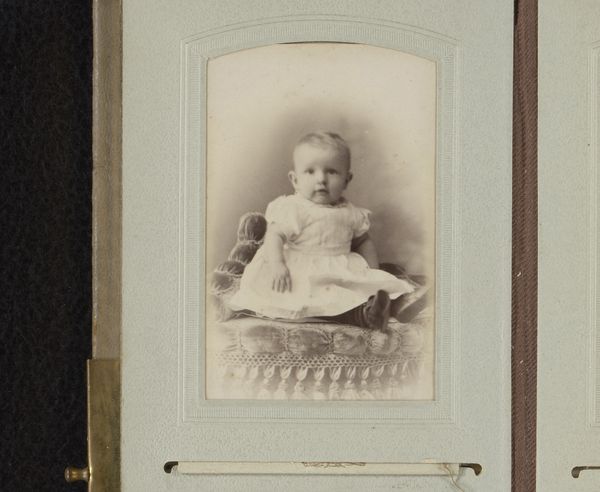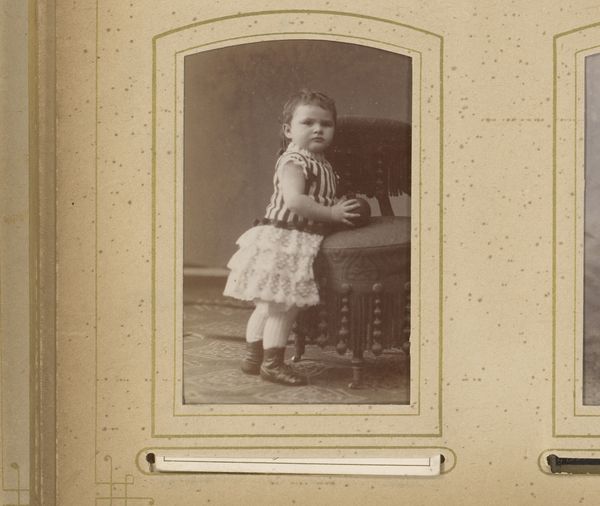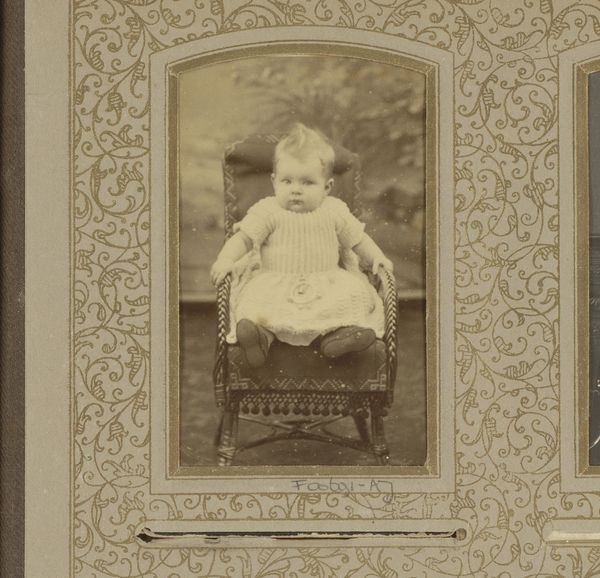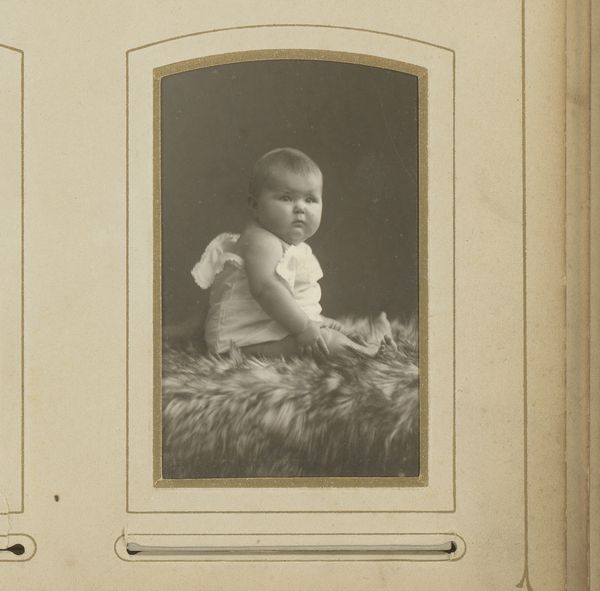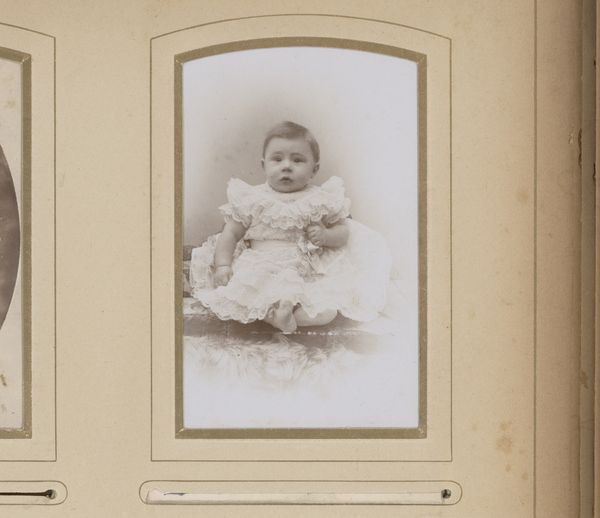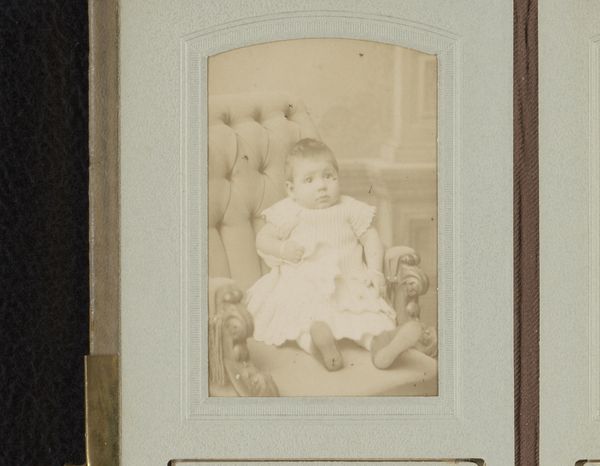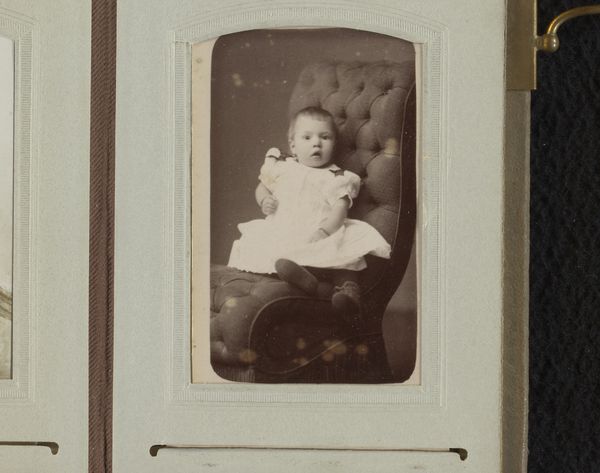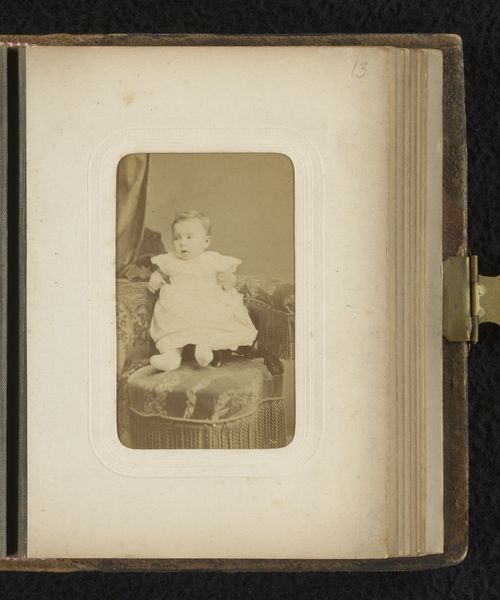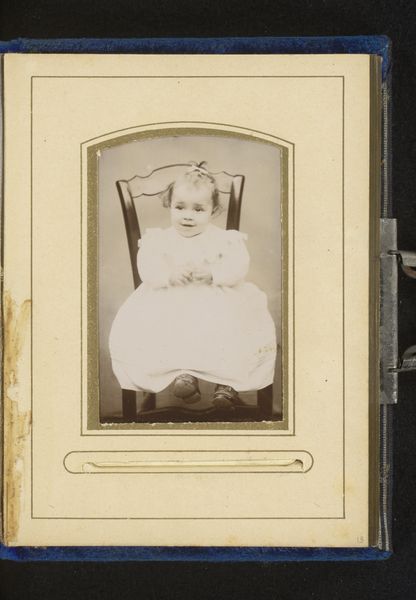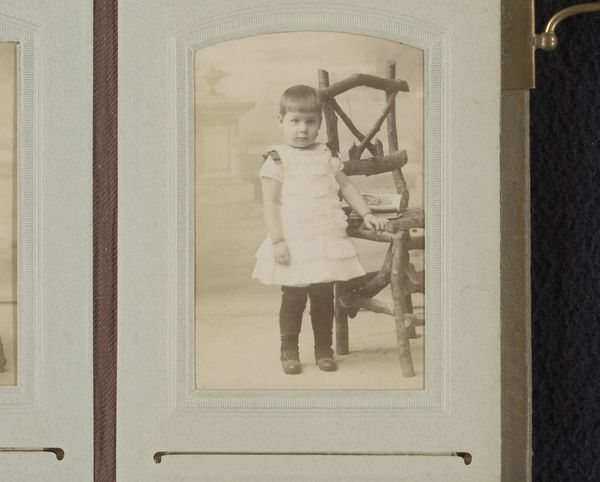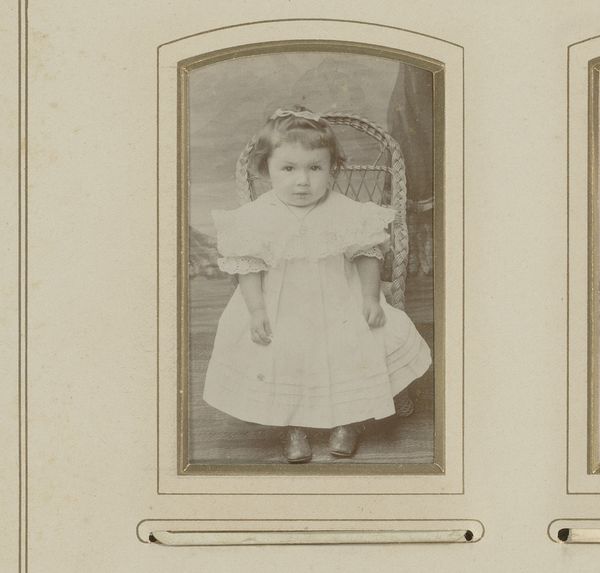
photography, gelatin-silver-print
#
portrait
#
pictorialism
#
photography
#
gelatin-silver-print
#
genre-painting
#
watercolor
#
realism
Dimensions: height 84 mm, width 54 mm
Copyright: Rijks Museum: Open Domain
Curator: Oh, hello! What we have here, nestled within the Rijksmuseum's collection, is "Portret van een baby op een stoel," a gelatin silver print attributed to Albert Greiner, dating from around 1890 to 1910. It really speaks to a bygone era, doesn’t it? Editor: It does! What strikes me immediately is this beautiful, sepia-toned dreaminess that just oozes out. I feel a slight melancholy, a sweetness tinged with, dare I say, slight existential worry mirrored in the infant’s eyes. Curator: Worry! Well, pictorialism was, in a way, obsessed with emotions through the arrangement of shapes and shades. Greiner here masters that muted palette, pushing back against stark realism and evoking painterly soft focus with his choice of gelatin silver printing. Editor: Absolutely! See how the composition cradles the subject? The gentle curves of the chair contrast beautifully with the angular frame of the portrait, creating a sense of protection—or perhaps confinement? I do love that dichotomy. Curator: The pose seems typical of the time, a desire to elevate the infant. Sitting regally in what is arguably an absurdly oversized armchair, the photograph conveys something very different from what we'd understand as family portraiture these days, Editor: The choice of medium itself contributes so much. The softness inherent in the gelatin silver process, particularly at that time, mutes stark lines. It turns a photograph almost into watercolor, blurring the boundaries of image and representation. Curator: Very perceptive. I see him using techniques we’d recognize from genre painting too, freezing a particular moment in an everyday scene, only it’s transformed, elevated by a certain mood. The effect of this being a posed photograph changes everything, since so much intention comes with it. Editor: Yes, and it beckons us to reflect, doesn't it? It captures a moment in the life of this baby and the history of photographic portraiture while simultaneously hinting at the vast, unwritten narrative to come. What stories reside behind those eyes! Curator: It's this capacity to generate curiosity and sentiment, and to preserve fleeting moments and specific aesthetic values that really keeps us returning to it! Editor: Agreed, a photograph, yes, but something much, much more!
Comments
No comments
Be the first to comment and join the conversation on the ultimate creative platform.
